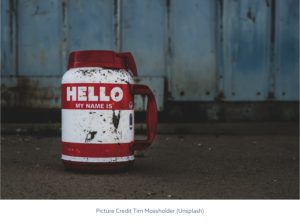
Good question! ICG Member Nick Bonney has some strong opinions and interesting stories to share.
“I have a confession. I hate naming research.
Whenever a client asks that we conduct research to look at naming options in isolation, I typically tell them not to waste their money. More often than not, it’s a brief that’s doomed to fail – on the one hand someone in the boardroom has already decided which contender is the winner and, on the other, it’s an artificial question for participants to respond to. I mean, when have you honestly spent more than a nano second pondering a name of a product at point of sale?
So, you can imagine my horror, when I heard the latest campaign from Jury’s Inn, with the brandline “we’re staying the same, just changing the name”. I’m sure I’m not the only one who listened to that ad and wondered just what is the point?! Given that the hotel chain is currently rocking a two star ‘poor’ rating on Trustpilot, perhaps the message should have been “come and see how we’ve changed”. The whole premise of the campaign smacks of something conceived in the boardroom rather than something which matters to customers. What a missed ‘once in a brand lifecycle‘ opportunity.
I’m a firm believer that, IP considerations aside, a brand’s name should be the final piece of the jigsaw, not the starting point. A brand name becomes meaningful when you imbue it with meaning through what it stands for in the market.
I should probably explain the root cause of my cynicism towards all things naming-related. In the dying days of the last millennium I made the move to join mobile phone network, Orange. As part of my leaving gift, the team from my previous employer, Maritz TRBi, handed me a compendium of all the research they had run over the preceding few years to develop one of the UK’s most loved brands. We have to wonder how the marketing landscape of the UK would have been different if the team had chosen the more mundane option recommended by the research, Hutchison Microtel, and not Orange.
It’s easy, with hindsight, to understand why the research came to this conclusion. Twenty years on, we’re more than accustomed to brands that bear no relation to their category, from Cazoo cars, Monzo money or groceries from Gorillas. However, in the 1990’s things were very different – brand names were typically far more prosaic, especially when it came to markets such as telecoms, where the leading brands were Cellnet or Vodafone.
Over the ensuing years with Orange, I was lucky enough to research how we should position the brand in virtually every corner of the world. Almost without fail, the key message to emerge from our conversations with consumers was that any change of name needed to be backed up by something that mattered to customers. As the internal catchphrase went “a brand is a promise delivered”.
This was a message that rang loud and clear when we looked at how to transition from Orange to EE. It was critical that this wasn’t simply a name change. Instead, it was the launch of the UK’s first and best 4G network. Indeed, whilst network technology has evolved yet again since, the ‘best network’ claim (evidenced by RootMetrics) remains at the heart of the EE brand proposition.
It’s not to say that research plays no part in the brand development process but it’s critical that the brief covers, not just the name, but also the ‘what’ and the ‘how’, i.e. what the brand is aiming to stand for and how the name will be used alongside other creative assets.
When Reuben Mattus launched the now world-famous, Haagen Dazs, in 1960, the Danish-sounding name was not only a tribute to the Danes and their exemplary treatment of the Jews during the Second World War but also designed to provide the ice cream brand with an air of continental sophistication.
In developing the brand, Mattus understood that the critical thing was not whether or not consumers liked the name Haagen Dazs but whether it evoked feelings of what the brand stood for in the market. The Mattus family were so in tune with their positioning that allegedly Reuben’s wife, Rose, would adorn continental dress to distribute samples to potential customers.
Standing for fancy continental flavours is one thing but it was equally important that the brand could substantiate that position. If the tub contained bland, flavourless vanilla sludge, the brand name would soon become a hollow shell. A house built on sand, if you will.
Potentially the wisest advice of all (and therefore an appropriate place to finish) comes from adland’s Sarah Carter – ‘consumers don’t give a shit and people’s indifference to brands and advertising should be the starting point’. The average punter will lose no sleep over the countless hours you may have spent in endless brainstorming meetings or steering committees trying to get buy-in to the shiny new naming strategy.
So perhaps the question Jury’s Inn should have really been pondering is ‘will anyone care’?…”
